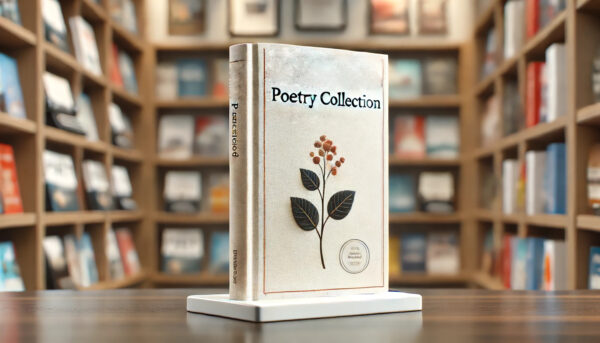In the ever-evolving landscape of literature and information dissemination, the principle of accessibility stands as a beacon of inclusive knowledge sharing. This segment elucidates the essence of accessibility within the realm of writing and publishing, emphasizing its pivotal role in ensuring that written content is consumable by a diverse audience, inclusive of individuals with varying abilities.
The Crucial Role of Accessibility
Accessibility transcends mere convenience, embedding itself as a core value that champions the right to information for all. This section delves into the profound impact of accessible publishing on fostering equitable learning opportunities, cultural engagement, and the joyous exploration of literature, thus nurturing a literary domain where every voice finds its echo and every narrative reaches its intended audience.
Navigating the Challenges and Opportunities
Embarking on the journey towards universal publishing accessibility unveils a spectrum of obstacles, from the pervasive lack of awareness about accessibility protocols to the technical and financial complexities involved in producing versatile formats. This part of the discussion aims to shed light on these impediments, illustrating the multifaceted challenge of bridging the accessibility divide in publishing.
Against the backdrop of challenges lies a realm of untapped potential, propelled by the digital revolution. This section explores how the advent of digital publishing tools and platforms has democratized access to written content, offering adaptable solutions that cater to a wide array of reader needs and preferences, thus heralding a new era of inclusivity in literature.
The Digital Catalyst
The transformation of publishing accessibility, fueled by digital innovation, marks a significant milestone in the journey towards inclusivity. Here, we explore the transformative impact of digital technologies, from e-books to screen readers, in making written content more accessible than ever before, highlighting the role of digital standards and guidelines in shaping a universally accessible publishing landscape.
As we stand on the cusp of a new horizon, the integration of cutting-edge technologies like artificial intelligence in the realm of publishing promises to further enhance content accessibility. This concluding section envisions the future of publishing, where automated tools not only streamline the creation of accessible content but also elevate the overall quality and reach of literary works, making the dream of a fully inclusive literary world a tangible reality.
The journey toward writing and publishing accessibility is a testament to the collective aspiration for a world where information is boundless and inclusive. Through the lens of technology, creativity, and unwavering commitment to rights, this narrative not only chronicles the evolution of accessible publishing but also serves as a clarion call for continued innovation and advocacy in the quest for universal access to the written word.
Your Publishing Journey Awaits – Start NowThe Fundamentals of Accessible Publishing
Accessible publishing stands at the confluence of inclusivity, technology, and creativity, aiming to ensure that all individuals, regardless of their physical or cognitive abilities, can effectively access, engage with, and enjoy written content. This inclusive ethos is not just about making books available to a wider audience; it’s about redefining the very essence of accessibility in the literary world. It involves a conscientious effort to design, produce, and distribute content in formats that are easily consumable by people with print disabilities, including those with visual impairments, learning disorders, and physical constraints that hinder the traditional means of reading.
The Significance of Inclusivity
The significance of accessible publishing is profound, echoing the universal right to information and knowledge. It democratizes access to literature and education, ensuring that learning and entertainment are not privileges of the few but fundamental rights of all. By embracing accessible publishing, the literary community acknowledges and addresses the diverse needs of its audience, fostering an environment of inclusivity and respect for individual differences.
Key Concepts in Accessible Publishing
- Accessible Formats: These are alternative ways of presenting written content, tailored to meet the varied needs of readers with disabilities. Accessible formats include large print, Braille, audiobooks, and e-books that support text-to-speech functionality. Each format serves a specific need, ensuring that everyone has the opportunity to read and interact with content in a way that suits them best.
- Alt Text: Short for “alternative text,” alt text is a concise description of images, charts, and other visual content within written materials. It plays a critical role in accessible publishing by providing context and information to those who cannot see the images, allowing screen readers to verbalize what is visually depicted on the page.
- Screen Readers: These software programs convert digital text into synthesized speech, enabling individuals with visual impairments to ‘listen’ to written content. Screen readers are indispensable tools in accessible publishing, offering a bridge between the visual world of text and the auditory realm of comprehension.
- Assistive Technologies: Beyond screen readers, a wide array of assistive technologies facilitates accessible reading. This includes refreshable Braille displays that convert text into tactile Braille characters, magnification software for low-vision readers, and speech recognition software that allows for hands-free interaction with digital content.
Setting the Standards: W3C and WIPO
The World Wide Web Consortium (W3C): As the principal international standards organization for the World Wide Web, W3C has been instrumental in developing guidelines that ensure the Web is accessible to everyone, including people with disabilities. The Web Content Accessibility Guidelines (WCAG) by W3C are widely regarded as the gold standard for web accessibility, encompassing principles that are equally applicable to digital publishing. These guidelines advocate for content that is perceivable, operable, understandable, and robust, laying a solid foundation for accessible digital content creation.
The World Intellectual Property Organization (WIPO): WIPO plays a pivotal role in the global dialogue on copyright and accessibility, particularly through the Marrakesh Treaty. This treaty aims to facilitate access to published works for persons who are blind, visually impaired, or otherwise print-disabled. WIPO’s efforts ensure that copyright laws do not become barriers to accessibility, advocating for an environment where knowledge and culture are accessible to all.
The realm of accessible publishing is a testament to the evolving landscape of literature, where the focus is steadily shifting from mere consumption to inclusive engagement. Through the concerted efforts of organizations like W3C and WIPO, along with the ongoing advancements in technology, the publishing industry is poised to embrace a future where everyone has the opportunity to explore the vast expanse of human knowledge and creativity. As we delve deeper into the nuances of accessible formats, alt text, screen readers, and assistive technologies, it becomes evident that the essence of accessible publishing lies in its ability to transcend physical and cognitive barriers, heralding a new era of inclusivity in the literary world.
Technology and Tools for Accessible Publishing
The evolution of technology has been a beacon of hope and transformation in the realm of accessible publishing, bringing forth innovative solutions that bridge the gap between content creators and readers with diverse needs. This digital renaissance, characterized by groundbreaking assistive technologies and adaptive digital platforms, is not merely about accessibility; it’s about redefining the very essence of engagement, inclusivity, and empowerment in the literary world.
Harnessing Assistive Technologies
- Screen Readers: These software applications are the cornerstone of digital accessibility, transforming written text into spoken word, thereby allowing visually impaired readers to ‘hear’ the content. Screen readers like JAWS (Job Access With Speech), NVDA (NonVisual Desktop Access), and VoiceOver (for macOS and iOS devices) offer nuanced navigation through text, menus, and even complex web pages, making them indispensable in the accessible publishing ecosystem.
- Refreshable Braille Displays: This tactile technology represents a leap forward in making digital content accessible to Braille users. These devices connect to computers or smartphones, converting on-screen text into Braille characters through dynamic pins that rise and fall to form Braille letters. This direct interaction with text not only fosters literacy but also ensures that Braille readers are not left behind in the digital age.
- Digital Talking Books: Evolving from traditional audiobooks, digital talking books offer enhanced navigational features, allowing users to move seamlessly between sections, chapters, and pages, akin to flipping through a print book. This format is particularly beneficial for individuals with print disabilities, providing a rich auditory experience that mirrors the depth and detail of written content.
Digital Platforms and Software Enhancing Accessibility
Microsoft Word: Beyond its ubiquitous presence in document creation, Microsoft Word has embedded accessibility features designed to support content creators in producing more accessible documents. These include the Accessibility Checker tool, which provides feedback on potential accessibility issues and features like Styles and Headings that facilitate screen reader navigation by structuring content hierarchically.
Adobe PDFs: Adobe’s Portable Document Format (PDF) is a staple in digital publishing, known for preserving the visual integrity of documents across platforms. Adobe Acrobat Reader and Adobe Acrobat Pro DC offer built-in accessibility features, such as text reflow for better readability on small screens, high-contrast viewing modes, and compatibility with screen readers, ensuring PDFs are accessible to a broader audience.
Enhancing Accessibility with Alt Tags, Image Descriptions, and Plain Language
- Alt Tags and Image Descriptions: Visual content in digital publications can be a barrier for visually impaired readers. Alt tags and detailed image descriptions serve as textual equivalents of images, graphs, and charts, allowing screen readers to convey the essence of visual elements through spoken word. Crafting concise yet descriptive alt text is an art that enhances the inclusivity and richness of digital content, ensuring all readers can grasp the full narrative, including its visual nuances.
- Plain Language: The complexity of language can often be an unintended barrier to understanding. Plain language principles advocate for clear, straightforward expression, prioritizing ease of understanding without sacrificing depth. In accessible publishing, plain language serves as a bridge, making content more approachable for readers with cognitive disabilities, non-native language speakers, and those with varying levels of literacy. It’s about ensuring that the message is not lost in the intricacy of language but is delivered in a manner that is accessible to all.
The confluence of assistive technologies, digital platforms, and thoughtful content creation practices marks a new era in accessible publishing. Screen readers and refreshable Braille displays offer a gateway to the written word, transforming digital text into accessible formats that cater to the visually impaired. Digital talking books enrich the reading experience with their auditory depth, bringing literature to life for those who find solace and joy in spoken narratives.
Digital platforms like Microsoft Word and Adobe PDFs extend the reach of accessibility features, embedding tools, and guidelines that encourage the creation of content that is inherently inclusive. These platforms serve as the canvas on which accessible content is crafted, with features that guide creators towards best practices in accessibility, from structured headings for easy navigation to compatibility checks that ensure content can be consumed by a diverse audience.
Alt tags, image descriptions, and the adoption of plain language are the threads that weave together the tapestry of accessible content. They represent the meticulous attention to detail that ensures every element of a publication, from the grand narratives to the subtle visual cues, is accessible to all. This holistic approach to accessibility underscores the profound impact of technology and thoughtful content creation on democratizing access to information and literature.
Your Publishing Journey Awaits – Start NowAs we navigate through this digital landscape, the synergistic relationship between technology, platforms, and content creation practices continues to evolve, driven by the relentless pursuit of inclusivity and equity in the literary world. The journey towards accessible publishing is an ongoing narrative of innovation, empathy, and commitment, where every advancement brings us closer to a future where the joy of reading is a shared, universal experience, unbounded by physical or cognitive limitations.
The Publishing Industry and Accessibility
The publishing industry stands at a pivotal juncture, where the call for inclusivity and accessibility in literature is louder and clearer than ever. This transformative era is characterized by a growing recognition of the diverse needs of readers and a concerted effort to make written content universally accessible. The journey towards this noble goal, however, is lined with both challenges and milestones that define the current state of accessibility within the industry.
Navigating the Waters of Accessibility
The publishing landscape today is a mosaic of varying levels of accessibility, with some sectors pushing the boundaries of inclusivity, while others are still catching up. Digital publishing has undoubtedly paved the way for more accessible content, offering flexibility in formats and interactive features that traditional print cannot match. E-books, for instance, can be easily adapted to suit the needs of readers with visual impairments or dyslexia, thanks to adjustable font sizes, spacing, and text-to-speech capabilities.
Despite these advancements, the industry as a whole grapples with a uniform approach to accessibility. The challenge often lies in balancing the cost and complexity of producing accessible content with the imperative to cater to a diverse readership. Smaller publishers, in particular, face significant hurdles due to limited resources and expertise in accessible publishing practices.
Pioneers in Accessible Publishing
Amidst these challenges, there are beacons of progress—publishers who have embraced accessibility as a core principle of their mission. Notable examples include Benetech’s Bookshare, an online library that offers a vast collection of accessible books for people with print disabilities, and the Royal National Institute of Blind People (RNIB), which provides a range of services, including publishing accessible books and magazines.
Major academic publishers like Elsevier and Pearson have also made strides in ensuring their digital content is accessible, adhering to global standards such as the Web Content Accessibility Guidelines (WCAG). These efforts are not just about compliance; they reflect a deeper commitment to inclusivity and the belief that knowledge should be barrier-free.
Overcoming Barriers to Accessibility
The road to fully accessible publishing is fraught with obstacles, from the technicalities of retrofitting existing content to meet accessibility standards to the need for ongoing education and awareness within the industry. Publishers must navigate copyright issues, particularly when transforming content into accessible formats and stay abreast of the evolving legal and regulatory landscape.
One of the key strategies in overcoming these challenges is collaboration—both within the industry and with advocacy groups, technology providers, and the readers themselves. Initiatives like the Accessible Books Consortium, a multi-stakeholder partnership facilitated by the World Intellectual Property Organization (WIPO), exemplify how collaboration can lead to greater access to books for people with print disabilities.
Investment in technology and training is another crucial factor. Publishers are increasingly leveraging AI and machine learning to automate aspects of the accessibility process, such as generating alt text for images or ensuring that digital content is structured correctly for screen readers. Training for authors, editors, and designers on the principles of accessible content creation is also becoming more common, embedding accessibility into the publishing workflow from the outset.
Moreover, publishers are adopting inclusive publishing guidelines that go beyond legal compliance, recognizing that accessibility is a marker of quality and a competitive advantage in a market that values inclusivity. These guidelines not only cover the technical aspects of accessible content creation but also advocate for a shift in mindset, where accessibility is viewed as an integral part of the publishing process, rather than an afterthought.
Your Publishing Journey Awaits – Start NowEmbracing the Future of Accessible Publishing
The publishing industry’s journey toward accessibility is a reflection of a broader cultural shift toward inclusivity and equity. While challenges remain, the strides made by pioneering publishers and the ongoing efforts to surmount barriers are a testament to the industry’s commitment to making literature accessible to all. This commitment is not just about adhering to standards or regulations; it’s about recognizing the fundamental right of every individual to access knowledge, culture, and entertainment.
As the industry continues to evolve, the hope is that accessible publishing will become the norm rather than the exception. With continued innovation, collaboration, and a steadfast commitment to inclusivity, the future of publishing holds the promise of a world where every book is within reach of every reader, regardless of their physical or cognitive abilities. In this future, the power of the written word is truly boundless, transcending barriers and uniting us in our shared human experience.
Inclusive Publishing Practices
The journey toward a more inclusive publishing world is paved with innovation, empathy, and a steadfast commitment to accessibility. Embracing inclusive publishing practices is not merely about compliance with standards but fostering a culture where every reader’s experience is valued and optimized. This commitment involves strategic planning, creative problem-solving, and a deep understanding of the diverse needs of readers.
Crafting Accessible Content: Digital and Print
The creation of accessible content requires a multi-faceted approach, blending technology with traditional publishing wisdom. In the digital realm, this includes ensuring that e-books and online materials are compatible with assistive technologies, such as screen readers and refreshable Braille displays. Key strategies involve using semantic HTML for web content, which allows screen readers to interpret and vocalize content accurately, and ensuring that e-books in EPUB format follow the latest accessibility standards, providing rich navigation and adaptable presentation.
For print materials, accessibility can be enhanced through the thoughtful design of physical books. This includes considerations like high-contrast fonts and colors for readers with low vision, simple and clear layouts to aid cognitive accessibility, and the use of tactile elements for sensory engagement. The choice of paper, font size, and even the binding can significantly impact the usability of a print book for individuals with physical disabilities.
Elevating Content with Alt Text and Visual Cues
Visual elements in both digital and print publications present unique challenges and opportunities for accessibility. Alternative text (alt text) is a critical component, providing a textual description of images, graphs, and charts, allowing those using screen readers to understand visual content. Crafting effective alt text requires a balance between conciseness and descriptiveness, ensuring that all readers can grasp the intended message or emotion conveyed by visual elements.
Beyond alt text, other visual cues and accessible design principles play a significant role in enhancing the reading experience. This includes the use of clear headings, bullet points, and lists to organize information, making it easier for readers with cognitive disabilities to follow along. Consistent and intuitive design layouts help in orienting and navigating through the content, benefiting all readers but especially those with attention-deficit or visual-processing disorders.
Illuminating Inclusive Publishing: Case Studies
Benetech’s Global Certified Accessible Program: Benetech, through its Bookshare initiative, has spearheaded the Global Certified Accessible program, which certifies e-books that meet rigorous accessibility standards. This program not only provides a vast library of accessible books but also works directly with publishers to educate and support them in creating content that is truly accessible from the start. This initiative showcases the power of collaboration between non-profit organizations and traditional publishers in driving industry-wide change.
RNIB’s Talking Books Service: The Royal National Institute of Blind People (RNIB) in the UK has revolutionized accessibility with its Talking Books service, offering a vast collection of audiobooks free of charge to people with any level of sight loss. This service not only provides accessible content but also emphasizes the importance of choice and independence for readers with visual impairments, setting a benchmark for public services and publishers alike.
Penguin Random House’s Commitment to Accessible Publishing: As one of the largest publishers globally, Penguin Random House has committed to making its digital book library accessible. By adhering to the EPUB Accessibility 1.0 standard and incorporating feedback from the visually impaired community, they have set a precedent for how major publishers can integrate accessibility into their core operations, influencing the broader market towards inclusivity.
These case studies exemplify how inclusive publishing practices can be implemented across different scales and platforms, from global publishing giants to specialized services and non-profit initiatives. They illustrate the tangible impact of thoughtful, inclusive publishing on individuals’ lives, offering a blueprint for others in the industry to follow.
Towards a More Inclusive Future
The adoption of inclusive publishing practices signifies a paradigm shift in how content is created, distributed, and experienced. By prioritizing accessibility and inclusivity, publishers not only expand their reach to a broader audience but also champion the rights of all individuals to access and enjoy literature. The journey is ongoing, with each successful project serving as a stepping stone towards a literary landscape where no reader is left behind, and every story is told in a way that everyone can experience.
The Role of Organizations and Consortiums
In the realm of accessible publishing, the collective efforts of various organizations and consortiums have been instrumental in shaping a more inclusive future for readers worldwide. Entities such as the DAISY Consortium and the World Intellectual Property Organization (WIPO) have played pivotal roles in advocating for, developing, and promoting standards and practices that ensure everyone has equal access to written information, regardless of their physical or cognitive abilities.
Your Publishing Journey Awaits – Start NowDAISY Consortium: Pioneering Accessible Reading
The Digital Accessible Information System (DAISY) Consortium stands as a beacon of innovation in the accessible publishing field. Founded with the mission to develop global solutions for accessible publishing, the DAISY Consortium has been at the forefront of creating technologies and standards that transform the reading experience for individuals with print disabilities. Their contributions include the development of the DAISY format, an accessible digital book format that offers features such as audio, text, or a combination of both, allowing users to tailor their reading experience to their specific needs.
The Consortium’s work extends beyond technical solutions, encompassing advocacy and training to support publishers, libraries, and individuals in adopting accessible publishing practices. By fostering a collaborative network of members from around the globe, the DAISY Consortium exemplifies how shared knowledge and resources can drive progress in making information universally accessible.
World Intellectual Property Organization: Bridging the Accessibility Gap
WIPO plays a crucial role in the international landscape of accessible publishing through its dedication to copyright and intellectual property issues that intersect with accessibility. One of WIPO’s landmark achievements is the Marrakesh Treaty, which aims to facilitate access to published works for persons who are blind, visually impaired, or otherwise print-disabled. This treaty represents a significant step forward in balancing copyright law with the need to provide access to literary works for those with print disabilities.
By enabling the reproduction, distribution, and making available of published materials in formats accessible to the blind and visually impaired, the Marrakesh Treaty underscores the principle that intellectual property rights should not be a barrier to accessibility. WIPO’s efforts in administering the treaty and supporting its implementation worldwide highlight the organization’s commitment to leveraging copyright frameworks to promote social good.
Collaborative Efforts for Universal Access
The collaborative endeavors spearheaded by organizations like the DAISY Consortium and WIPO are a testament to the power of collective action in addressing complex challenges like accessibility. These organizations bring together stakeholders from various sectors, including publishers, technology providers, disability advocacy groups, and governmental bodies, to work towards common goals.
Standards such as the Web Content Accessibility Guidelines (WCAG) and the EPUB Accessibility Specification have been developed through such collaborative efforts, providing clear, actionable guidelines for creating accessible content. These standards serve as a foundation upon which publishers can build to ensure their materials are usable by a wide audience, including those with disabilities.
Forging an Inclusive Path Forward
The impact of organizations and consortiums in the field of accessible publishing is profound, driving not only the development of technological solutions and standards but also fostering a global dialogue on the importance of inclusivity in the information society. Through their advocacy, innovation, and collaboration, these entities play a crucial role in ensuring that the right to access information is upheld for all individuals, paving the way for a more equitable and inclusive future in publishing.
From Writing to Reading: Ensuring Accessibility Throughout the Supply Chain
In the journey of a book from concept to reader, every step in the publishing supply chain holds the potential to enhance or hinder accessibility. Recognizing and acting upon this continuum of opportunities is pivotal in creating content that is truly inclusive. The process begins with the writer and extends through editing, publishing, and distribution, culminating in the reader’s experience. At each juncture, a collaborative effort can significantly elevate the accessibility of the final product.
Embedding Accessibility from the Start
The genesis of an accessible book lies in the awareness and intention of the writer. Authors can contribute to accessibility by considering diverse readerships during the writing process, such as employing clear, concise language and avoiding unnecessarily complex sentence structures that can pose challenges for readers with cognitive or learning disabilities. Additionally, when writers include descriptions of visual elements within the text, they inherently support readers who rely on text-to-speech software.
Editors: The Accessibility Gatekeepers
Editors play a crucial role in weaving accessibility into the fabric of the manuscript. This phase involves not only refining the text for clarity and readability but also ensuring that the manuscript’s structure facilitates easy navigation. Editors can advocate for the inclusion of descriptive captions for images, the use of headings and subheadings to delineate sections clearly, and the adherence to accessible document formatting guidelines. These practices not only enhance the reading experience for individuals with print disabilities but also improve overall readability.
Publishers: Champions of Inclusive Publishing
Publishers hold the keys to the kingdom when it comes to bringing accessible content to market. Their commitment to accessibility can manifest in various ways, from choosing accessible formats for publication to implementing best practices in digital publishing. This includes ensuring that e-books conform to the EPUB Accessibility 1.0 standard, providing alternative formats like audiobooks or Braille editions, and selecting printing options that consider the needs of readers with low vision, such as high-contrast text and paper that minimizes glare.
A crucial aspect of the publisher’s role is the selection and use of publishing platforms and software that support accessibility features, such as metadata that describes the accessibility features of the book, ensuring that the content can be easily discovered and utilized by readers who require these features.
Your Publishing Journey Awaits – Start NowA Collaborative Effort
The journey from writing to reading is a collaborative one, requiring open communication and cooperation between writers, editors, publishers, and even readers. Feedback from the disability community can provide invaluable insights into how content can be made more accessible. Additionally, training and resources for industry professionals on accessible publishing practices can help embed these considerations into every stage of the publishing process.
By fostering a culture that values accessibility from the outset, the publishing industry can ensure that books are designed to be enjoyed by the widest possible audience. This inclusive approach not only broadens the market for published works but also affirms the industry’s commitment to ensuring that everyone, regardless of their abilities, has access to the transformative power of reading. In this way, the publishing supply chain becomes a conduit for inclusivity, carrying the principles of accessibility from the writer’s desk to the reader’s hands.
Future Directions in Accessible Writing and Publishing
The landscape of accessible writing and publishing is poised for transformative growth, driven by rapid technological advancements and a deepening commitment to inclusivity. As we look toward the future, several emerging trends and technologies promise to further revolutionize how content is created, shared, and experienced, making accessibility an integral part of the publishing ecosystem.
Harnessing Emerging Technologies
Innovations in artificial intelligence (AI) and machine learning are at the forefront of the next wave in accessible publishing. AI-driven tools are becoming increasingly sophisticated in generating descriptive alt text for images, translating texts into multiple languages, and even predicting and adapting to the individual preferences of readers with disabilities. Voice recognition technology is also making strides, offering hands-free writing and reading options that could significantly benefit individuals with physical disabilities.
Augmented reality (AR) and virtual reality (VR) present exciting possibilities for creating immersive reading experiences that are accessible to all. These technologies can be used to create multi-sensory content that goes beyond text, offering auditory, visual, and tactile cues to engage readers with diverse needs.
The Digital Revolution
Digital publications and platforms continue to play a pivotal role in enhancing accessibility. The flexibility of digital formats allows for the customization of content to suit a wide range of preferences and requirements, from text size and background color adjustments to complex navigational aids for screen reader users. Cloud-based publishing platforms are facilitating seamless updates and improvements to digital content, ensuring that accessibility features can be easily integrated and updated in response to user feedback and technological advancements.
Blockchain technology, though in its nascent stages within the publishing sector, offers the potential for securing and managing digital rights in a way that could streamline the distribution of accessible content. By providing a transparent and efficient system for rights management, blockchain could facilitate easier access to a broader range of materials for people with print disabilities.
Advocacy and Development: The Path Forward
Continuous advocacy and development are crucial in ensuring that the momentum toward accessible publishing not only continues but accelerates. Stakeholders across the publishing supply chain, from authors and publishers to technology providers and policymakers, must collaborate to advocate for standards, regulations, and best practices that prioritize accessibility.
The engagement of the disability community in the development process is essential for creating content that truly meets the needs of all readers. This involves not just consultation but active participation in designing, testing, and providing feedback on accessible content and technologies.
Educational initiatives and training programs for publishing professionals can further embed accessibility into the fabric of the industry, ensuring that everyone involved in the creation and distribution of content is equipped with the knowledge and skills to support accessibility.
Envisioning an Inclusive Future
As we look to the future of accessible writing and publishing, it is clear that the confluence of technology, advocacy, and collaboration holds the key to creating a truly inclusive literary landscape. By embracing emerging trends and technologies, continuously advocating for best practices in accessibility, and fostering a culture of inclusivity, the publishing industry can ensure that the written word is accessible to all, regardless of their abilities. This vision for the future is not just about adapting to change; it’s about leading the charge toward a world where every person has the opportunity to explore, learn, and be inspired by the power of literature.
Your Publishing Journey Awaits – Start NowThe Simplicity of Publishing with Spines
Publishing a book has never been more accessible, thanks to innovative platforms like Spines. They have streamlined the publishing process, making it incredibly straightforward for aspiring authors. Spines leverages advanced AI to streamline editing, formatting, and publishing, reducing the traditional barriers that many writers face. Authors can upload their manuscripts, and Spines’ intuitive interface guides them through a simple step-by-step process, offering real-time suggestions for improvement and ensuring that the content meets accessibility standards. This includes the automatic generation of alt text for images, ensuring compatibility with screen readers, and providing options for accessible formats. Spines also integrates seamlessly with various digital platforms, allowing authors to distribute their work widely and reach readers across the globe.
With its commitment to inclusivity and ease of use, Spines is revolutionizing the way we think about writing and publishing, ensuring that anyone with a story to tell has the tools and support to share it with the world.
Conclusion
The journey through the nuances of writing and publishing accessibility underscores a vital truth: access to the written word is a cornerstone of an inclusive society. This exploration has illuminated the transformative impact that accessibility can have—not just in enabling individuals with disabilities to enjoy literature and information but in enriching the cultural and intellectual tapestry of our world. The significance of accessible publishing extends beyond compliance or convenience; it embodies a commitment to equality, ensuring that everyone has the opportunity to learn, imagine, and be inspired by the written word.
The responsibility for nurturing this inclusive environment is a collective one, shared among writers, publishers, and technology providers. Each plays a crucial role in weaving accessibility into the fabric of literary content, from the initial drafts penned by authors to the final formats delivered to readers. It is a call to action that resonates across the industry: to champion accessible practices, to innovate with purpose, and to listen and respond to the needs of all readers.
As we look forward, the call for more inclusive practices in the publishing world is not just a challenge but an opportunity—an invitation to lead the charge towards a future where literature opens doors for everyone, without barriers. Let this be a rallying cry for the industry to embrace the potential of accessible publishing fully, ensuring that every book, every page, and every word is a bridge to knowledge and imagination for all.







